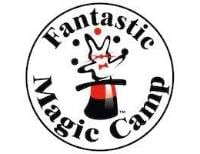By Laura Regan-Porras
Regardless of your politics on the issues of the day, race is often front-and-center on the evening news, and our children are often exposed to very adult conversations about race. This reality may beg the question, “How do I talk about race with my child?” As with any issue, behaviorists tell us the first rule of thumb about discussing race with children is to model the behavior you want from them.
1. Be a good race-relations role model. Practice diversity.
Demonstrate positive race relations in practical ways in your own life by outwardly embracing diversity. Ask yourself, “Do I have friends of other races?” If most of your friends look like you, consider seeking out opportunities for you and your child to interact with people of other races and cultures. Attend a different church on Sunday; observe how they worship. Find something to appreciate about it and comment on it to your child.
You may find yourself asking, “Do I openly and verbally appreciate other races and cultures in front of my child?” If you see a television program about a different culture, use the opportunity to discuss a different way of life and world view. Identify positives and find similarities between your lives.
2. Listen first. Don’t assume shared understandings about race.
Sociologists assert that children construct differences and similarities in ways other than their adult counterparts. Children notice variances quite early developmentally but it may be for reasons that interest children and not how adults define the difference. A teacher noticed that six-year-old girls on a playground were not playing with one girl in particular, who was African American. The astute teacher listened first before intervening and found that the majority of the girls preferred to play with girls who wore their hair with ribbons instead of girls who didn’t use ribbons. The African American girl didn’t use ribbons in her hair. She was excluded from conversations and games. The girls were not excluding her because of race but because of ribbons. To adult eyes, the game looked racist but to the children controlling the game, it made sense. The teacher then noticed one girl sharing her ribbons with the African American girl. The teacher chose to intervene in that moment and praised the sharing behavior. She used it as an object lesson about inclusion.
3. Answer your child’s questions about race and culture in an age-appropriate way.
Alvin Poussaint, M.D., the psychiatrist who consulted for “The Cosby Show,” states that there are two critical developmental ages when race and culture questions are likely to occur: ages six to eight and the teenage years. These stages are times when the child’s world is expanding and his or her values are forming or solidifying. Responding to a child’s questions at these stages in simple, honest terms is important. “I don’t know” and “Give me a chance to think about that and then we will talk” are appropriate responses to race-related questions from time to time, but when an occasion arises for a thoughtful, age-appropriate conversation, be prepared and embrace the opportunity.
If your seven-year-old child comes home and declares a classmate has an Asian mom and a black dad and says, “Isn’t that weird?” you may choose to say, “Not weird, just different from us.” When your teen asks what you think about his school renaming their sports teams because Native Americans find “Redskins” to be offensive, you can use it as an opportunity to discuss your own beliefs about racial slurs while demonstrating respect that others might not see it the same way.
There are teaching moments just about every day that allow you to help your child see past race and accept physical differences as the norm. Taking the time to focus on helping your child form a healthy view on race and culture not only benefits his development, it benefits many more lives to come. Visit civilrights.org for more tips on talking about race with your kids.

















